American alligators, or simply, gators, are common crocodilians that are native to the southeastern United States. These alligators are an amazing conservation success story, and were once driven to the brink of extinction. Nowadays these large reptiles have thriving populations. Read on to learn about the American alligator.
Description of the American Alligator
Most individuals of this species are long, and rather thick and girthy in size. Some populations are leaner in appearance, depending on climate and prey availability. They can grow to be very large, as is true with many crocodilian species.
Generally speaking, the older the alligator is, the larger the size, and some old males can grow to well over 15 ft. long. Males are larger than females, and usually much heavier. Their skin is normally a dark olive, brown, gray, or nearly black.
Interesting Facts About the American Alligator
With such a large maximum size, it is no surprise that alligators are commonly feared. They should not, however, be vilified. Instead, they should be respected for their power and hunting skill. Learn more about these impressive animals below.
- Alligator vs. Crocodile – In some portions of their range, American alligators overlap with American crocodiles. When comparing side by side, they are actually very easy to distinguish. Alligators have a much wider, rounder snout. Crocodiles have a narrow, almost v-shaped snout.
- Toothy Grin – If you had to guess, how many teeth would you say an alligator has? They have such long mouths, so they must have hundreds of teeth, right? In actuality, the average gator has 74 – 80 teeth. That’s still a lot of teeth! In comparison, humans have just 34 teeth.
- Food Fight – Those teeth are put to good use when hunting. Alligators grab onto prey and drag it underwater to drown it. Then they are presented with large meal, but a problem. They can’t chew! Instead of chewing pieces off of their meal, these crocodilians roll to rip chunks off of their food.
- Regeneration – All of that biting and tearing put a lot of wear and tear on these predators’ teeth. Luckily, alligators will continue to regrow teeth throughout their lives. Over their entire lifetime most gators grow approximately 4,000 teeth!
Habitat of the American Alligator
American alligators live in aquatic systems, usually fresh water. They will occasionally live in brackish water, but this is more infrequent. Some frequently occupied habitats include lakes, ponds, streams, wetlands, swamps, marshes, and more.
Within their territories they will construct alligator holes, which are extremely important during the dry season, as they do not dry up. A number of aquatic species are able to survive dry periods by living in alligator holes.
Distribution of the American Alligator
This reptile has a surprisingly large range, because they have some level of cold tolerance. They can live as far north as North Carolina, and as far south as Florida. Their range also expands westward to east Texas. T
his species has the northernmost range of any crocodilian. In order to survive the colder winters, they go through a semi-hibernation known as “brumation.” They remain dormant with their snout above the water to breathe over the ice.
Diet of the American Alligator
The diet of this species varies, based on how large the individual is. Mature individuals are capable of taking down almost any prey species, and are considered apex predators. This means that they are at the top of the food chain.
Hatchlings prey on insects, larvae, small fish, snails, worms, and other tiny prey. Young adults will feed on fish, turtles, birds, snakes, frogs, and small mammals. Adults will prey on all of the above, but are also known to eat deer, wild boar, and other large mammals!
American Alligator and Human Interaction
Though American alligators can, and have, attacked humans, fatal interactions are surprisingly rare. Of the crocodilian species, these alligators are some of the least aggressive. Human activity and population growth is continually pushing into gator habitat, resulting in more and more conflicts. Nuisance alligators are trapped and killed, and trapping for meat and skin also occurs frequently.
Domestication
Alligator farming is a prevalent and successful endeavor. They breed very easily in captivity, and both hides and meat have a growing market. Annually, alligator farms produce approximately 45,000 alligator hides. Despite this, there has not been selective breeding for a long enough period to even consider calling them domesticated.
Does the American Alligator Make a Good Pet
No, none of the crocodilians make good pets. Not only are they dangerous, and extremely difficult to house because of their large maximum size, but it is also illegal to own one as a pet.
American Alligator Care
In a zoological setting the primary care component of these reptiles is a water source. It should be deep enough for the animal to submerge fully, and they should have plenty of room to grow into the enclosure.
Providing food is easy, as these creatures will prey on a wide variety of species in the wild. They can be fed fish, mice, rats, rabbits, chickens, and more. Some zoological institutions also train their alligators, and other crocodilians, using positive reinforcement. One of the many things trained are stations, where the animals each move to their own spot to be fed.
Behavior of the American Alligator
Like most aquatic reptiles, gators must bask in the sun to thermoregulate. They are cold blooded, and must use the sun to heat their bodies, rather than self-warming. Once they are nice and warm, they sink into the water to search for prey. They are ambush predators, which means they lie in wait for prey to come too close. They can sit just below the surface of the water, with only their eyes and nostrils showing.
Reproduction of the American Alligator
During the breeding season, alligators will congregate to search for mates. Males will perform dances and vocalize to attract a mate. After mating, the female builds a nest of mud, sticks, vegetation, and leaves close to the water.
She will lay anywhere from 20 to 50 eggs, and add additional vegetation. The plant matter will decay, producing heat and helping the eggs incubate. It takes about 65 days for the eggs to hatch. Female alligators are surprisingly dedicated mothers, and will guard their young for up to 1 year.

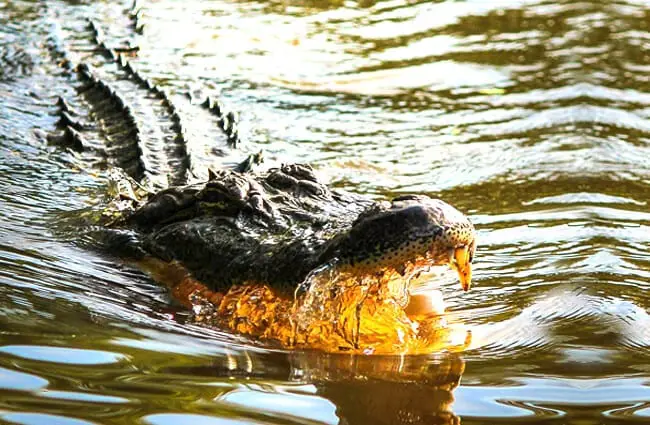
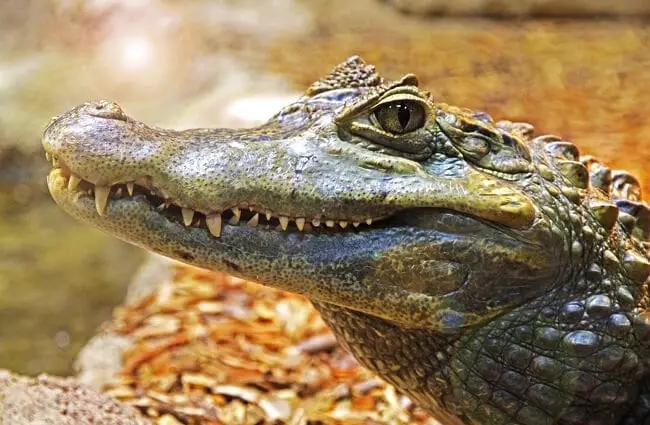
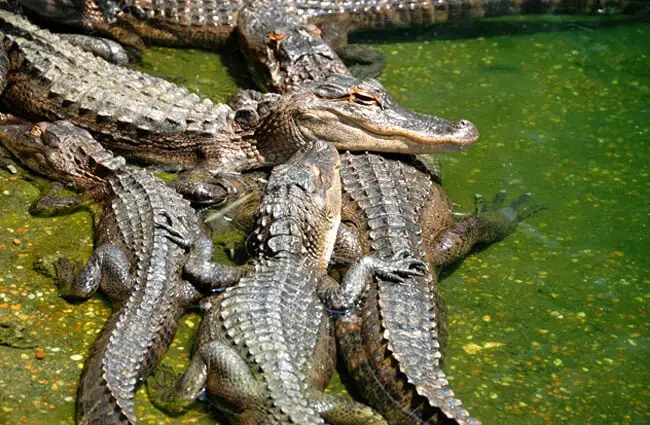
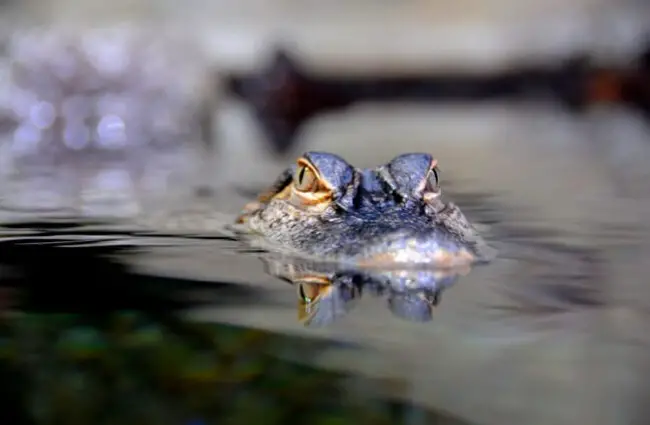
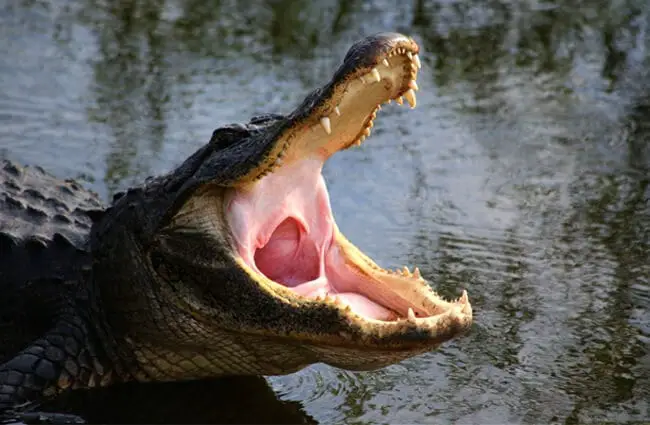
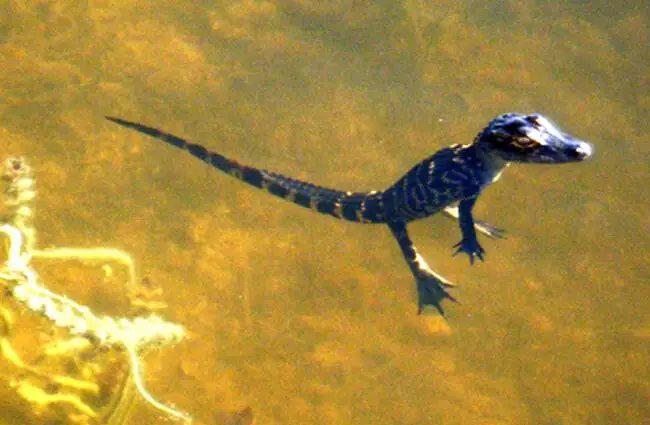

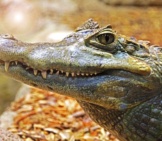


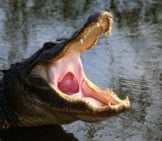

![Red Angus Closeup of a beautiful Red Angus cowPhoto by: U.S. Department of Agriculture [pubic domain]https://creativecommons.org/licenses/by/2.0/](https://animals.net/wp-content/uploads/2020/03/Red-Angus-4-238x178.jpg)












![Red Angus Closeup of a beautiful Red Angus cowPhoto by: U.S. Department of Agriculture [pubic domain]https://creativecommons.org/licenses/by/2.0/](https://animals.net/wp-content/uploads/2020/03/Red-Angus-4-100x75.jpg)

